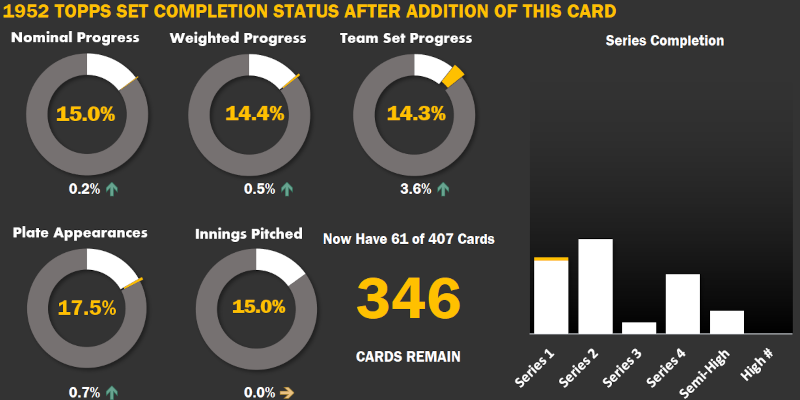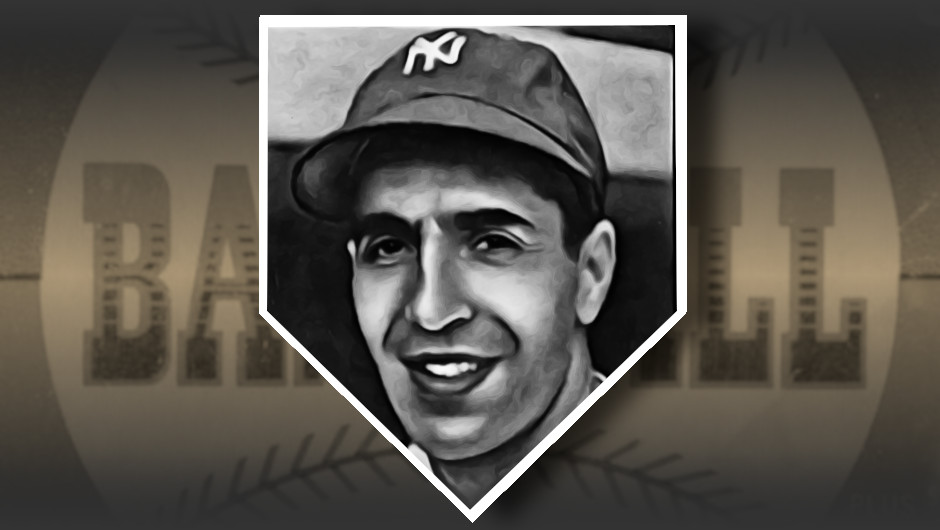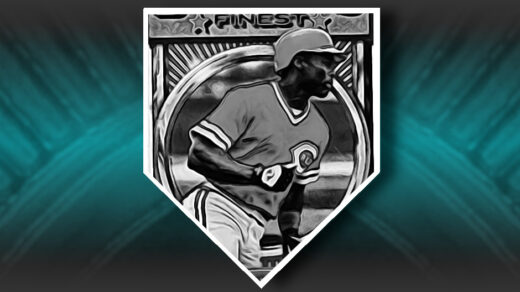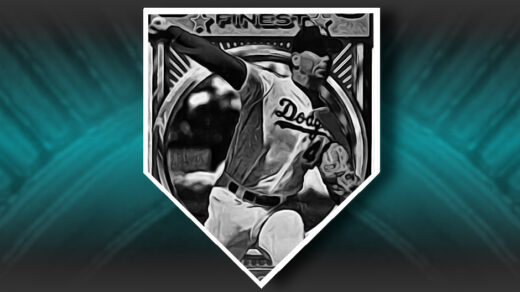Most of my 1952 Topps set building project has advanced through the purchase of individual cards. That was not the way I added one of the most popular ’52 cards. I found a collector breaking up a completed low number set. The cards were housed in a binder and were being sold by the sheet. While this is a common way of breaking up sets, this was a bit unique as these oversized cards were in special 9-card pages rather than the typical 8 card layout usually associated with the era. I picked up the second page of the binder, landing the popular card #11 featuring Phil Rizzuto.

This is one of the black backed cards of the first series, making it one of the earliest Topps cards to hit the shelves that year. A previous collector appears to have mounted it in two different scrapbooks, judging from contrasting positioning of tape on the corners as well as the upper and lower borders. Someone thought this card was special enough to lift from a scrapbook and place in a second one.
A popular and long-time Yankees announcer after his playing career ended, Rizzuto captured a larger share of fans than would be expected from a 13-year playing career. His unique speaking style and personality quirks placed the Brooklyn native on a similar pedestal as teammate Yogi Berra among Yankee fans.
“Scooter’s” height sometimes made for fun reading. Topps gave him the benefit of the doubt with an extra half inch on the back of his 1952 card and mentioned in the text how the other NYC teams overlooked him because of his stature. St. Louis Browns owner Bill Veeck once quipped that Rizzuto should be banned for his height after the Commissioner’s office frowned upon a marketing stunt that saw a 3’7″ batter appear in a game for the Browns that year.
Rizzuto never put up the power numbers of his teammates. He did, however, show himself to be one of the better defensive shortstops of the game and probably still ranks among the top 50 defensive players of all time. He was one of the better bunters in the game, making him one of the few pinstriped players to ever be considered a student of small ball.

There is a player from another era that carries a similar performance rank and a large train of admiring hometown fans. The Nationals’ Ryan Zimmerman compares well to Rizzuto in terms of my favorite metrics and his names is likewise synonymous with his team. There are easily a dozen or more Yankees that outplayed Rizzuto in the team’s history, but only a very small handful outrank him in terms of name recognition.









